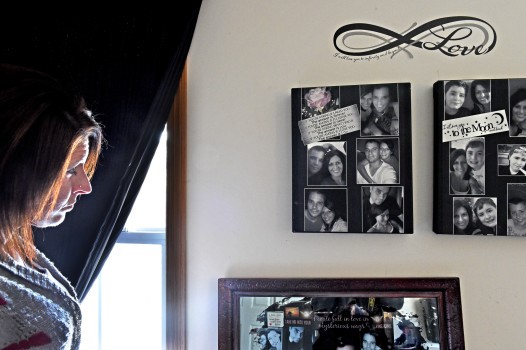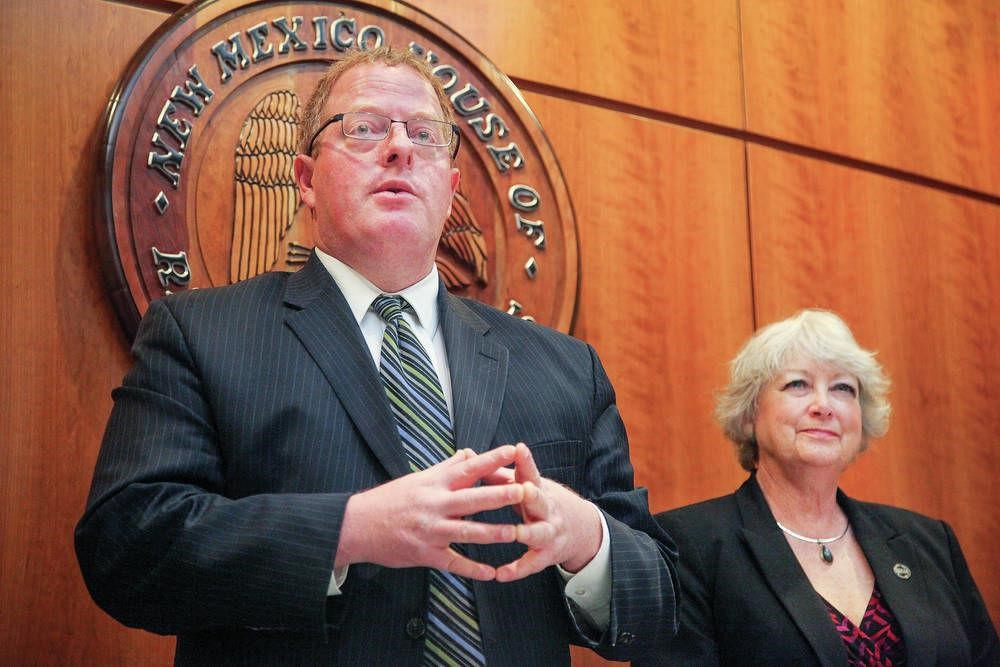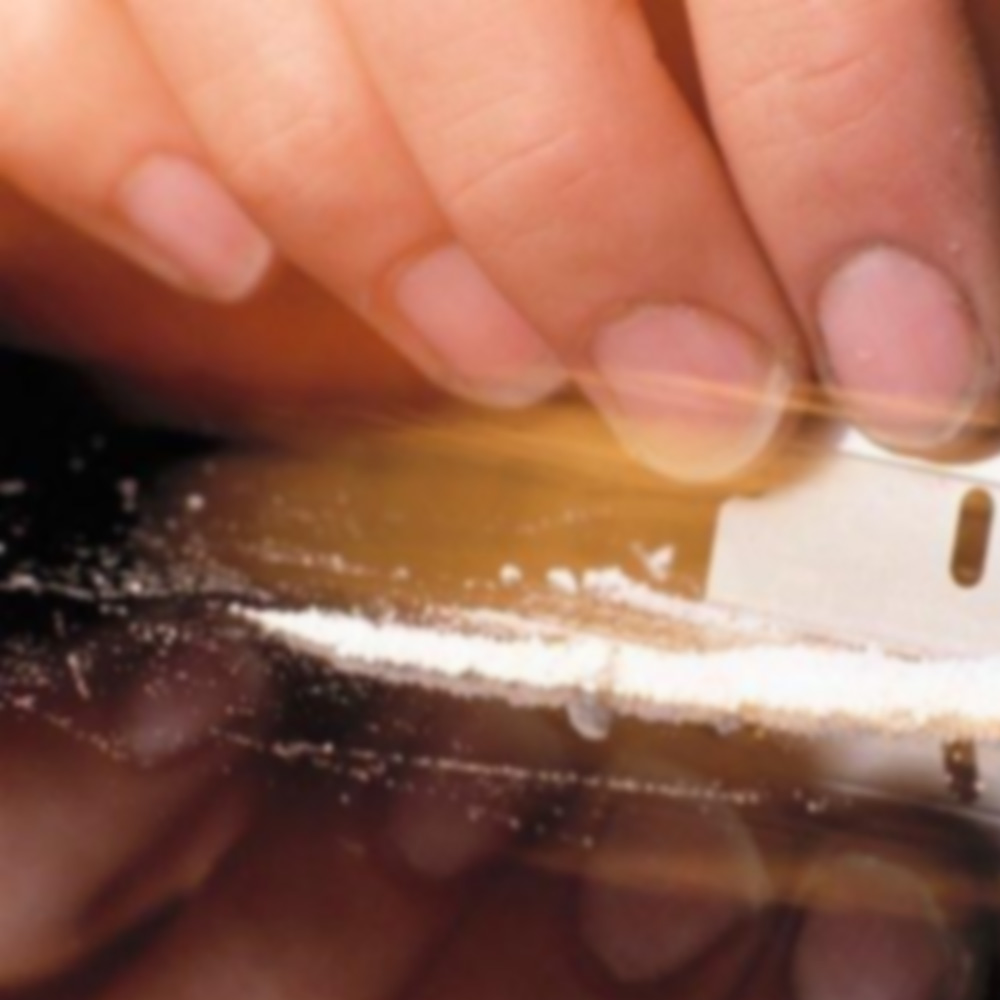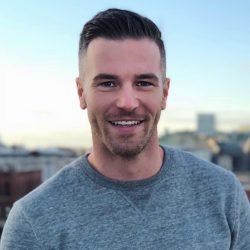The guitar icon looks back on his turbulent history, as chronicled in new doc ‘Life in 12 Bars,’ and ahead to what’s next
By David Fricke December 4, 2017
Directed by Lili Fini Zanuck, Life in 12 Bars also has extraordinary footage of Clapton onstage with Cream in the Sixties and revealing interviews with the women in his life including his grandmother Rose – who raised him after Clapton’s 16-year-old mother, Patricia, left England with his father, a Canadian airman – and first wife Pattie Boyd, the object of Clapton’s romantic obsession on 1970’s Layla and Other Assorted Love Songs. The film is unflinching, too, about the deep blues inside those he sang, with painfully frank sequences on Clapton’s battles with heroin, alcohol and the accidental 1991 death of his young son Conor, which inspired the Grammy-winning ballad “Tears in Heaven.”There is a remarkable scene early in Eric Clapton: Life in 12 Bars, the new Showtime documentary about the guitarist’s career, that sums up his meteoric rise as a British-blues prodigy and worldwide superstar: Bob Dylan in a London hotel room in 1965 watching John Mayall’s Bluesbreakers on television and raving over that band’s guitarist – Clapton, now 72, then barely out of his teens. “I still can’t believe that’s real,” Clapton says, laughing, in a New York hotel lobby the day after a screening. “I thought, ‘Oh, that must be Photoshop-ed.'”
But Clapton is also facing forward, working on his next studio album. “I’m in the middle of it,” he reveals, noting that “it started with the leftover” from the cache of rare and previously unrecorded demos that formed the basis of his 2014 covers tribute, The Breeze: An Appreciation of JJ Cale. “I still have some JJ songs that we’re playing with. “Sometimes we mix them with dub, sometimes we take it back to pure country.” Clapton is writing new material as well with his studio collaborator and keyboard player Simon Climie.
“And then I’ll do some shows next year,” Clapton declares late in this interview, conducted for the current issue of Rolling Stone and greatly expanded here in depth, range and candor. In fact, two weeks after this conversation, the guitarist announced a huge outdoor show on July 8th with special guests Santana, Steve Winwood and Gary Clark Jr. in London’s Hyde Park – the site of Clapton’s live debut with Blind Faith in 1969. But, he insists, “I don’t see it as touring anymore – just one date at a time.”
You saw the film again yesterday. What is it like to walk through your life like that?
It’s not as bad as the first time I saw it. I was in an editing room. There was one scene that I was really uncertain about, which was the semi-racial thing that went down during my worst period. I made remarks onstage about foreigners [at a show in Birmingham, England in 1976]. Being the drunk that I was, I just went on a rant.
Did you ask Lili to take it out?
I just have to face the guy that I became when I was fueled on drugs and alcohol. It’s incomprehensible to me, in a way, that I got so far out. And there was no one to challenge me. Because I may have become quite intimidating. People said they couldn’t challenge me because I came back twice as strong.
The only guy who did was my manager [at the time], Roger Forrester. He said to me, “You’ve got a problem.” When I decided he was right, he was the person I called. He packed me up and sent me off to [the rehab facility] Hazelden. When I got to Hazelden, I had to sign this thing saying who is your significant other. Anyone else would have put a family member – or my wife. I was married. But I put him. Because he was the only one who would stand up to me and call me out.
The first part of the film is about how you became a musician. The second is about how music saved you at every turn – from obsession, drugs, alcohol and even the death of your son. When things were at rock bottom, you always had the guitar.
I would add one thing – listening to music became just as important as being able to play. During all of those periods of my life, I found new or old music that helped me, that got me through even when I wasn’t playing well or I wasn’t playing at all. It might be Maria Callas singing or the playing of [Delta bluesman] Tommy McClennan. I remember coming out of the smack period [in the early Seventies] – anything I heard would reduce me to tears, especially if it came from the heart. The music from Carousel still does bring me to tears.
That clip of Dylan watching you on TV with John Mayall is an example of the incredible happenstance in your life. You lived at a historic intersection of cultural forces in the Sixties. And you participated in them, because you actually had the gift.
It was a good time. Lili and I were talking about it again today, about how free that period was in the Sixties and early Seventies. There wasn’t a consciousness about what would be successful or not. It didn’t matter as long as you took a shot at everything and just kept on playing. And if anyone came in, [they could] join in. It was open.
By the time I got to the Nineties, I was really confused about the competitive nature of music. Bands were aggressive to one another, judgmental. You just make records and hope that they do better than the other guy’s records. In that point you’re talking about, anything could happen, and it had nothing to do with success.
The film opens with your video tribute to B.B. King after he died in 2015. It sets a tone too: Many of the faces and voices in the movie – Duane Allman, Cream’s Jack Bruce, George Harrison, your friend and Cream roadie Ben Palmer – are gone.
I don’t want to even think about that. I’m determined to stick around as long as I can. I’m watching everything. I go to the doctor’s at the slightest sign of anything.
How is your health? On the back cover of your last album, I Still Do, there is a photo of you playing guitar with a fingerless glove on your hand.
I had eczema from head to foot. The palms of my hand were coming off, and I had just started making this record with [producer] Glyn Johns. It was a catastrophe. I had to wear mittens with Band-Aids around the hands and played a lot of slide [guitar] as a result.
When I saw you in concert this year, in the spring and fall, there were no gloves.
My hands are good. It hasn’t gone completely, but I put ointment on. It’s just getting old now. I’m as good now as I’ve been in the last two years.
Have you ever considered the possibility that, because of illness or age, you couldn’t play guitar again?
That would be alright. I would accept it. Because playing is difficult anyway. I have to get on the bottom of the ladder every time I play guitar, just to tune it. Then I have to go through the whole threshold of getting calluses [on the fingers] back, coordination.
But the guitar comes up a lot in the film as a place of refuge for you.
I still go there. If there is trouble in the house, which is very rare, I pick up my guitar and remove myself from the situation. I will inevitably play something bland, an exercise. But it will keep me from being engaged in the conflict.
Is that something you recognized as a boy?
I became acquainted with it pretty quick, because I would go to it immediately. I would always go to that place to find some peace. It would always be a staple for stress.
Yet you did have a thing about attachment – leaving the Yardbirds and Mayall, breaking up Cream and Derek and the Dominos.
Ben [Palmer] says that [in the film] – I could achieve very strong relationships, and the next day I’d be gone. Yeah, that is peculiar. But it was never like that with the music. To this day, I can return to the stuff that I first heard, and it will have the same effect on me that it did then. There is a section of the film where Cream is playing at the Fillmore; we’re playing around Ginger [Baker]’s drum solo …
“Toad.”
It was so good. We were playing so well together. And watching that, I thought if only they [Baker and Bruce] could have found a way to resolve their conflict. I was having the time of my life musically. But like Ben said, the bickering was outrageous. I don’t know if you could fairly say which one it was, or if it was my inability to take part. Maybe it wasn’t the same guy all the time.
At least one of you was crazy at some point in the day.
Exactly. But the music was getting so refined that it made it alright.
One of the shots in the film that I like – and it goes by in an instant – is the photo of the Crawdaddy Club in London, where the Yardbirds played. And there are two guys …
Climbing on the ceiling.
It looks like a punk-rock moshpit.
It really was.
People who see you in arenas now might not realize you made your bones in these wild environments.
We were club musicians – low-ceiling places where you’d share a dressing room with the other band. When you came in, they were taking their trousers off. Very tight, small places – that was what I was most comfortable with. Doing arenas – I’m still not used to it. I like to create a little space in front of me where I think I’m playing in a little room.
How do you do that in the Garden?
I look at the exit signs [laughs]. I look somewhere in the back, into the darkness, and I think, “Oh, I’m in the Marquee” or “I’m in the Flamingo Club.”
You also have that open space, when you solo in blues numbers like “Little Queen of Spades,” where you seem most free as a player.
That’s always there for me. I have to maintain that. Any time it gets into set pieces, I don’t really want to be there. It’s another version of “For Your Love” [the Yardbirds’ 1965 pop hit – Clapton played on the record but quit before it came out]. Anytime I can play free, it is in 12 bars. That’s a good title [for the film]. It’s the way I approach everything.
It’s the most difficult thing to write, a modern blues. The only person I know who can do it well is Robert Cray. It comes straight out of him. I saw him recently this year, and he’s still doing it. He’s on fire, the real thing. I wish I could be like that. Really, I’m a musician. I try to be a singer and songwriter, and it’s interesting to me. But I would never think of myself as that. I’m just a blues musician.
Would you consider “Tears in Heaven” a blues? The circumstances would suggest that.
It isn’t. I was trying to write [Jimmy Cliff’s ] “Many Rivers to Cross” or [Bob Marley’s] “No Woman, No Cry.” It’s the same chord progression. I don’t know if I could express what I’m feeling in a blues, because a blues is at a level of anger and self-pity. And this was different.
There is a great B.B. quote in the film in which he describes the way you play a blues solo as “like putting pieces in a puzzle.”
That’s how I see it. I create a portion of time for a beginning and an end. It has to make sense, make a picture. If left to my own devices in the studio, I will go over and over and over until I think it is as refined as it can be. “Layla” was like that, like building a puzzle.
Is the puzzle ever complete?
It’s never complete. But I remember one night in Philadelphia with Cream. It was near the end of our touring together [in 1968]. We knew it was over. We were just having a good time playing. And I remember thinking “This is as great as it will ever be.” Have I ever been satisfied? Definitely for one night, yeah.
Ed Sheeran has said that you were the reason he started playing guitar. What do you say to younger artists like him about navigating the perils of success?
I don’t think you say anything, to be honest [laughs]. He has asked my advice. And what I’ve said to him is, “Slow down. Don’t burn it all up too fast.” But he seems to be committed to go as far as he can. He wants to conquer the globe. But what do you do then? Where do you go from there? It can’t always be up – for anybody.
How do you look back on your stardom in the Sixties and Seventies? You had pursuit of the music without worrying about the celebrity – as if the work was enough.
We didn’t consider what we were doing as business. I always use Cream as an example. We were just told where to go. We didn’t have time to think about how much money we were making, what was the right strategy, which town you should go to. Now you have guys like Ed who direct and produce their own shows. The music is part of that. But we couldn’t have done it that way then. It would have been a distraction.
What do you do to get away from the business – the distractions from your craft?
I have a business manager who talks to me almost daily about what we should be doing, like how we’re managing Crossroads [Clapton’s addiction treatment center in Antigua]. A lot of the time, I’ve told people to leave me alone, because I need to play. And it isn’t easy. It takes a lot of devotion to get to the point where what I’m playing is presentable.
When I was young, it was easy to get to that place. I had no relationships, no children, no business. I had nothing to worry about but play. Now there are all these things which I’m happy to be responsible for. But it does distract me from what makes it all possible.
We’ve talked before about the future of the guitar. Some people think the instrument has said what it needs to say in the culture, in music. Do you believe it still has a future as an expressive force? And what would you say to a young player looking for an original voice in there, especially going up against icons like yourself, B.B. and Jimi Hendrix?
This is funny, because I’ve had a conversation about this phenomenon just a while ago. In the last few months, I’ve been talking to a guy who doesn’t know where to go next. It was a conversation with a young musician who contacted me through some friends. I could see that he was genuine and I was interested in what he had to offer. Finally we had lunch and he said, “Do you want to listen to something?” It was esoteric and abstract, and I thought, “Where would this go?”
I wanted the guy to be taken somewhere. I could hear that he was in his own head too much, and that can be a cul de sac. There is always something to listen to, to aspire to, with the guitar. It is still the most flexible instrument. You can improvise on it. You have such freedom. I don’t think there is a limit to it.
That is heartening. Because I love guitars – the more, the merrier.
Me too [smiles]. Anyone who talks about it [the guitar as a spent force] should listen to Roebuck Staples [founding guitarist of the Staples Singers]. It is so moving. And that’s in the past. So it’s not about what’s to be. It’s already there. If you can get in touch with that, you can do anything.
http://www.rollingstone.com/music/features/eric-clapton-on-addiction-cream-the-future-of-the-guitar-w512759








